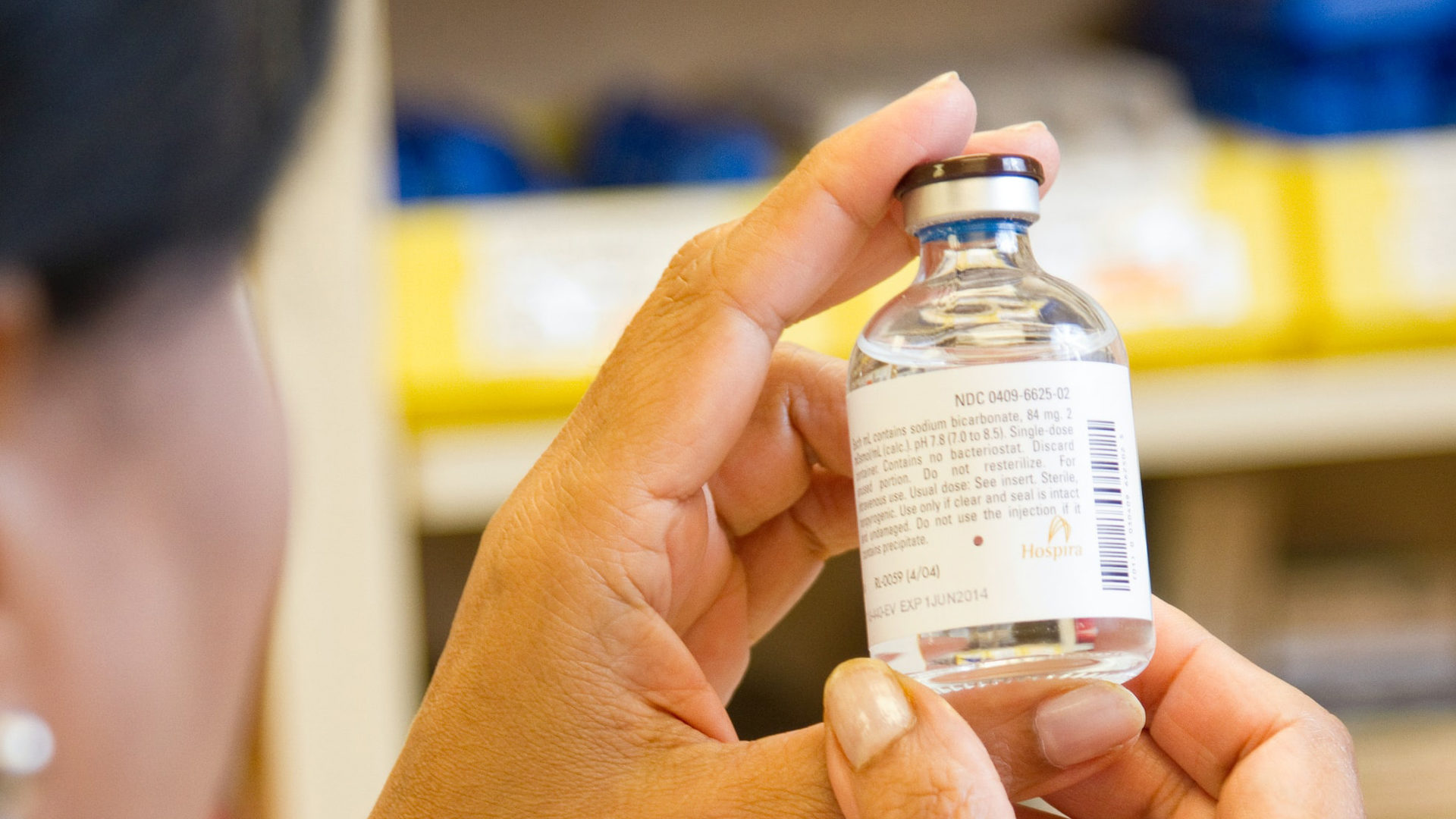Healthcare Scanner
Personalised drug patenting in Europe
June 2021
Opportunities for additional pharmaceutical product patent protection in Europe, based on the use of a drug to treat a patient exhibiting a biomarker indicative of drug response.
Recent years have seen a rapid growth in the number of pharmaceutical approvals for personalised drugs; drugs authorised for use in a sub-group of patients typically identifiable by a genetic trait or some biomarker. Developments in the case law of the European Patent Office have clarified the opportunities for securing additional patent protection for such drugs for use in treating the sub-group of patients.
Personalised Medicine (PM) is an evolving field in medicine where a therapeutic treatment is tailored to an individual with a particular disease.
The aim of personalised medicine is to target the right treatment to the right patient at the right time. In this way, patients who can gain benefit from treatment can do so as early as possible, while those that are not likely to respond are saved the time, expense and likely side effects of an unsuitable treatment.
The identification of the right patient for the right treatment is typically carried out using a diagnostic test (companion diagnostic test) for one or more biomarkers indicative of drug response.
In recent years there has been a significant increase in the number of new chemical entities approved by the major health authorities that are personalised medicines (PMs). For example, in 2020, the US FDA approved 49 new chemical entities and 19 of these (39%) were PM drugs[1].
The identification of the patient sub-group that benefits most from a drug might be made before the drug is first administered to any patients, but often this identification arises from post hoc analysis of the clinical trial data, often when the use of the drug to treat such patients had been disclosed.
This latter scenario created particular challenges to the ability to secure second medical use patent protection in Europe, however, European patent case law has developed in a way which addresses certain of these challenges.
History of second medical use patenting In Europe for medicine with a personalised use
Under the original European Patent Convention (EPC) legislation of 1973, it was possible to secure a patent for a new first medical use of a compound, however the legislation did not provide for the ability to protect second or further medical uses.
A form of claim drafting termed the “Swiss-type” claim was devised for protecting these inventions. It did not protect the compound for the new second or further medical use per se, but protected the use of the compound in the manufacture of a medicament for treating the second or further medical use. This was thus a purpose limited process claim directed to the way the compound was to be manufactured.
With the revision to the EPC (termed EPC2000) that came into force on 13 December 2007, purpose limited product protection for second and further medical uses was explicitly catered for in Article 54(5) EPC. This did away with the necessity to seek patent protection via the Swiss-type claim.
Article 54(5) EPC reads:
(5) Paragraphs (2) and (3) shall also not exclude the patentability of any substance or composition referred to in paragraph (4) for any specific use in a method referred to in Article 53(c), provided that such use is not comprised in the state of the art.[2]
[Article 53(c) EPC is the exception to patentability of methods for treatment of the human or animal body by surgery or therapy and diagnostic methods practised on the human or animal body.[3]]
However, following introduction of this new legislation it was left to case law to interpret the scope of the protection permissible, particularly what was meant by “any specific use in a (precluded) method”.
In February 2010, the Enlarged Board of Appeal (EBA), the legal authority within the EPO responsible inter alia for interpreting important points of law in relation to the European Patent Convention, provided some clarity on this issue with decision G2/08[4].
The patent application under consideration was directed to the use of a known drug in the manufacture of a medicament to treat the same disease but using a new dosage regime (orally once per day prior to sleep). The EBA ruled that “any specific use” did not have to be the treatment of another disease and so could relate to the new dosage regime, indeed, “a specific use” should be interpreted broadly. This ruling kept the door open for patenting via second medical use for a multitude of new “specific uses”.
The other important ruling in G2/08 is that the EBA clarified that the intent of the EPC2000 legislators was “as regards second or further medical uses” that the case law evolved under EPC1973 Act, including those with Swiss type claims, should be enshrined in the Convention.
Case law under the EPC1973 Act had already acknowledged the patentability of substances and compositions known in the prior art for use in the treatment of sub-groups of patients, i.e. those typical of most PMs.
However, one of the early cases, T233/96 [5], had ruled that the claimed sub-group of patients to be treated must be novel and not overlap with those patients previously treated with the compound.
This requirement for “no overlap” posed a potential problem in scenarios where the responsive patients, identifiable by a selective biomarker (e.g. gene mutation, expressed protein level etc), were identified from the post hoc analysis of patients already treated with the drug because these patients would overlap with the broader population already treated; and they inherently have the biomarker.
In order to address this “no overlap” restriction, a style of claim was devised which combined the identification of the patient sub-group to be treated with the treatment of that patient with the known drug.
We refer to this as a “hybrid claim” and an example is as follows:
Drug X for use in a method of treating a patient with breast cancer, wherein the method comprises:
(i) determining whether a test sample from the patient comprises a mutation in gene 1; and
(ii) if the test sample from the patient comprises a mutation in gene 1 administering to the patient an effective amount of drug X.
Even if Drug X had already been used to treat breast cancer patients generally (and some of those treated inherently would have had the mutation in gene 1), the fact that the patients had not actually had their gene 1 mutation status determined (prior to the patent application filing) meant that the claim was novel over those patients treated in the prior art. Inventive step was gained by identifying the sub-population that would benefit from treatment.
Indeed, this style of claim has been routinely found to be patentable by the Examining Divisions and Opposition Divisions of the European Patent Office (EPO) for many years.
The current position of second medical use patents for personalised medicines in Europe
In 2019, the EPO Board of Appeal’s case T0694/16 [6]), provided further good news for patentees. Here the Board clarified that whether one or more previously treated patients inherently possessed/displayed the discriminating biomarker is irrelevant to novelty under the EPC.
“If a claim is directed to a known compound or composition for use in a therapeutic method of treatment or prevention of a disease, and the claim specifies that the subject to be treated displays a clearly defined and detectable marker, which is not displayed by all subjects affected by or likely to develop that disease, then the purposive selection of the patients displaying the marker for the specified treatment is a functional feature characterizing the claim.“ (Catchword for [6])
Thus, provided the prior art does not identify the selected patients to be treated as having the characteristic/biomarker recited in the claim then novelty exists. Any previous concern over inherency need no longer apply, and so whilst the “hybrid claim” may have merit in some patent jurisdictions, there is no longer any need to protect these types of PM inventions using this type of claim in Europe. A claim written according to Article 54(5)EPC can therefore be secured, for example:
Drug X for use in the treatment of gene 1- mutation-positive breast cancer.
It is, however, worth noting that the decision in T0694/16 is a deviation from that set out in T233/96 and so a referral to and decision from the EBA may be needed in the future.
However, at present the European Patent system allows a number of ways in which it is possible to protect personalised medicines: as new molecular entities, as first medical uses and second medical uses, including purpose limited product claims for treating a sub-group of patients identifiable by a suitable biomarker or trait.
This last type of invention involves identifying the biomarker or trait that selects the patients that will likely respond favourably to the drug. Such identification could be made by anyone – a university student, a clinician, a diagnostic company, yet the patent claims could embrace the known drug for use in treating the newly identified target population.
To maximise the relevance of such a patent claim, e.g. for licensing or enforcement purposes, it is ideal if the patent claim language mirrors as closely as possible the language of the authorised use in a European Medicines Agency drug authorisation. An example of typical language in an authorisation might be:
Drug X™ is indicated in monotherapy for the treatment of patients with gene 1- mutation-positive breast cancer.
Thus, if the use of this drug for the specified target population represents the or a therapeutic approval for the drug in Europe, then a patent claim of the sort outlined above could be of significant strategic or commercial value.
Of course, in order to secure a valid patent, the identification of the target population likely to respond favourably to a particular drug must be kept confidential until a suitable patent application has been filed. Once this information is in the public domain the novelty of linking the drug efficacy with the target patient population will be lost and so will the opportunity for securing a relevant patent.
In conclusion
Relevant PM patents with purpose limited product protection for a (known) drug for use in treating a patient with a disease characterisable by, for example a detectable biomarker, can be secured in Europe both as hybrid claims and second medical use claims. Such patents are likely to prove increasingly commercially relevant.
[1] According to 2020 Report from Personalised Medicine Coalition. http://www.personalizedmedicinecoalition.org/Userfiles/PMC-Corporate/file/PM_at_FDA_The_Scope_Significance_of_Progress_in_2020.pdf
[2] https://www.epo.org/law-practice/legal-texts/html/epc/2020/e/ar54.html
[3] https://www.epo.org/law-practice/legal-texts/html/epc/2020/e/ar53.html
[4] https://www.epo.org/law-practice/case-law-appeals/recent/g080002ep1.html
[5] https://www.epo.org/law-practice/case-law-appeals/pdf/t960233eu1.pdf
[6] https://www.epo.org/law-practice/case-law-appeals/pdf/t160694eu1.pdf
This article was prepared by HGF Patent Director Dr Laurence Gainey.































